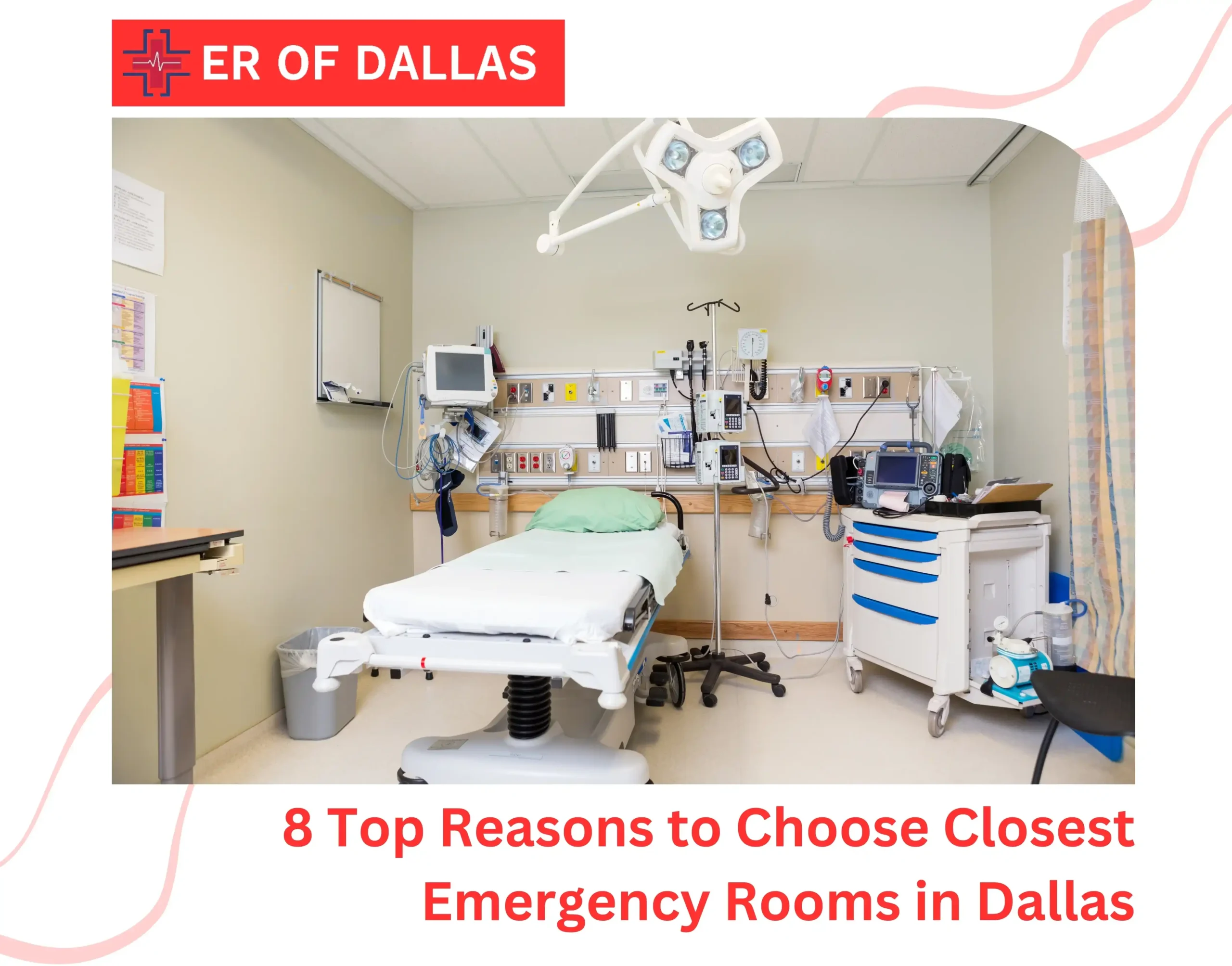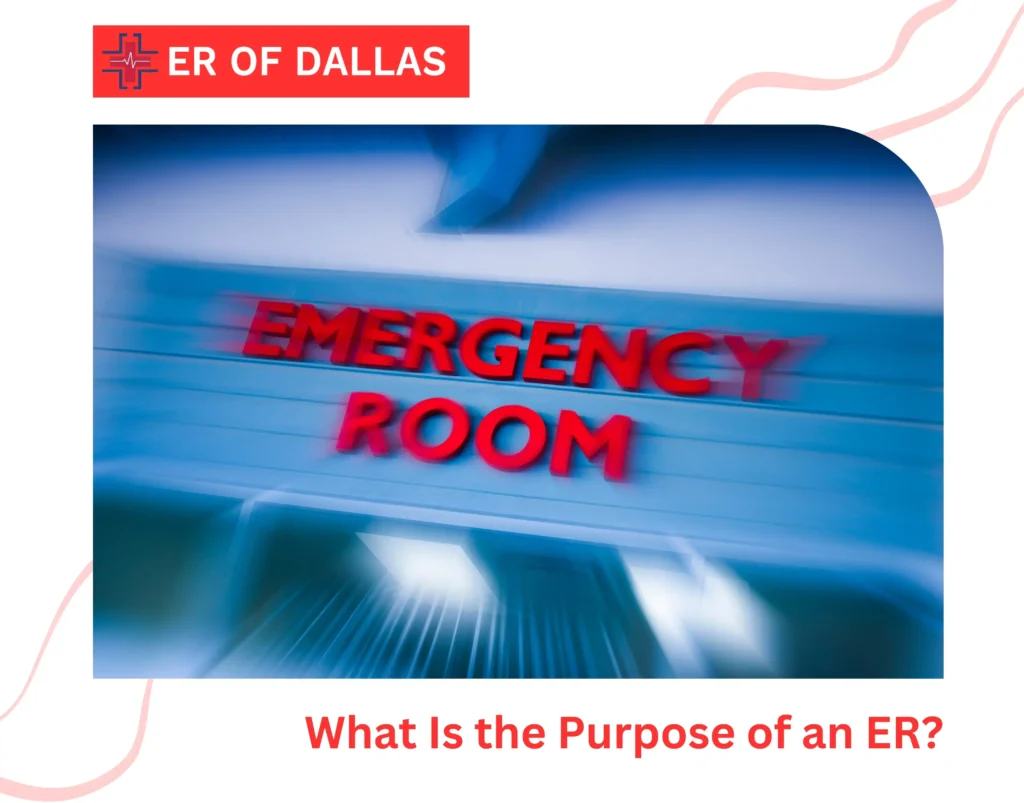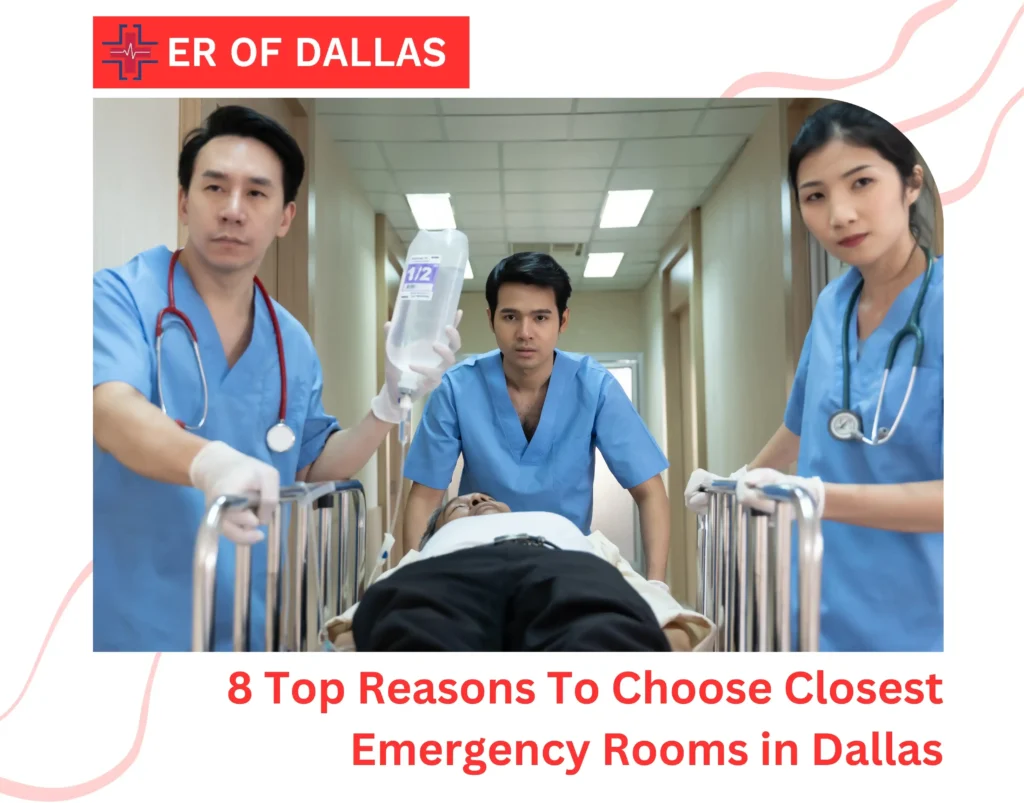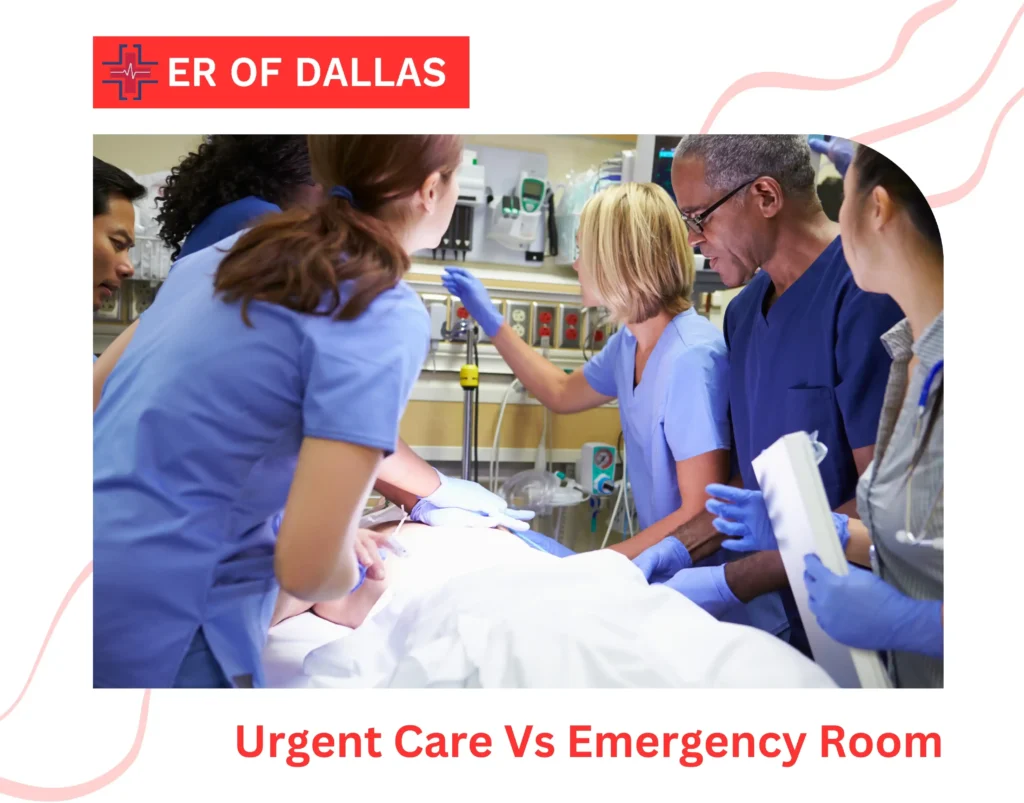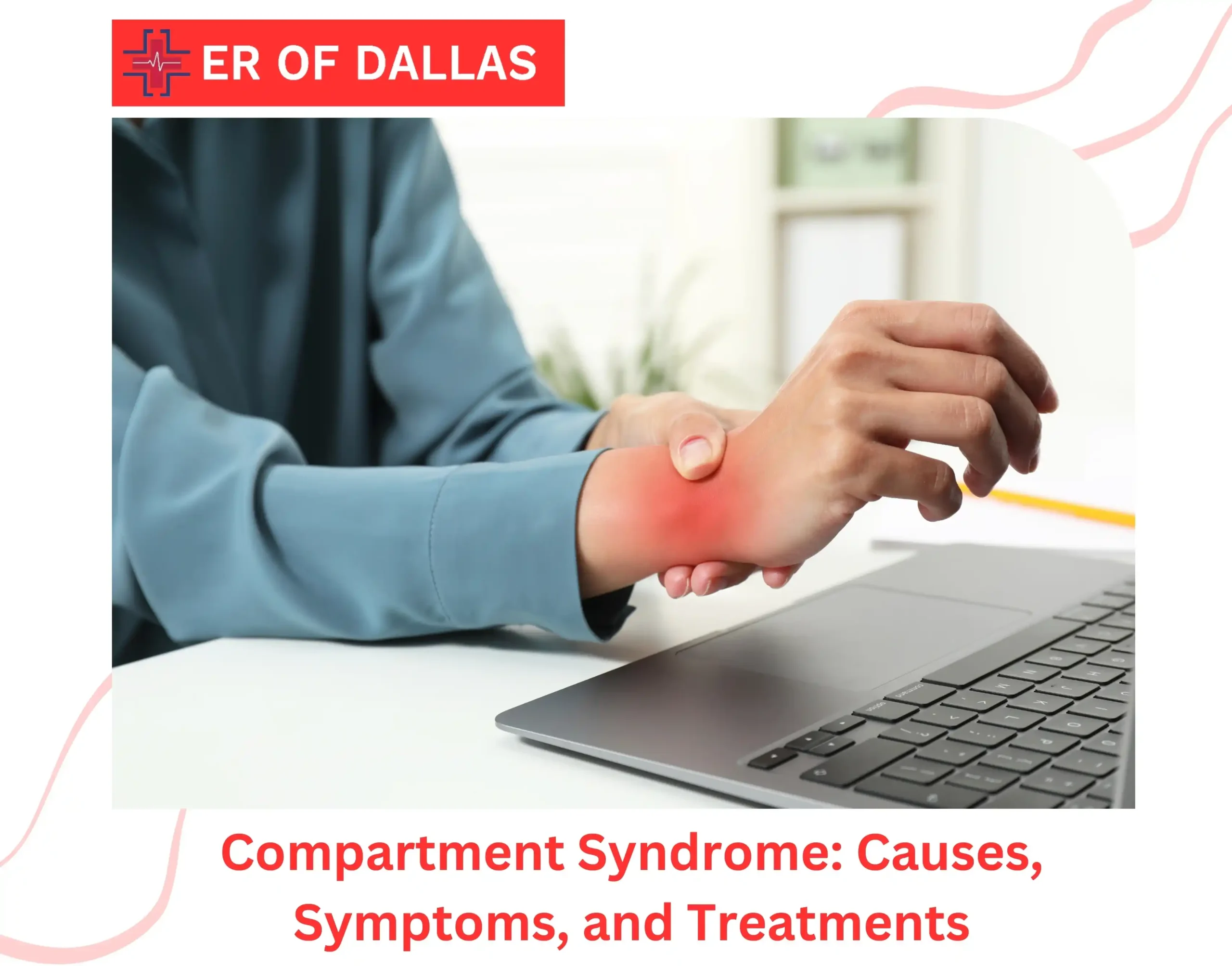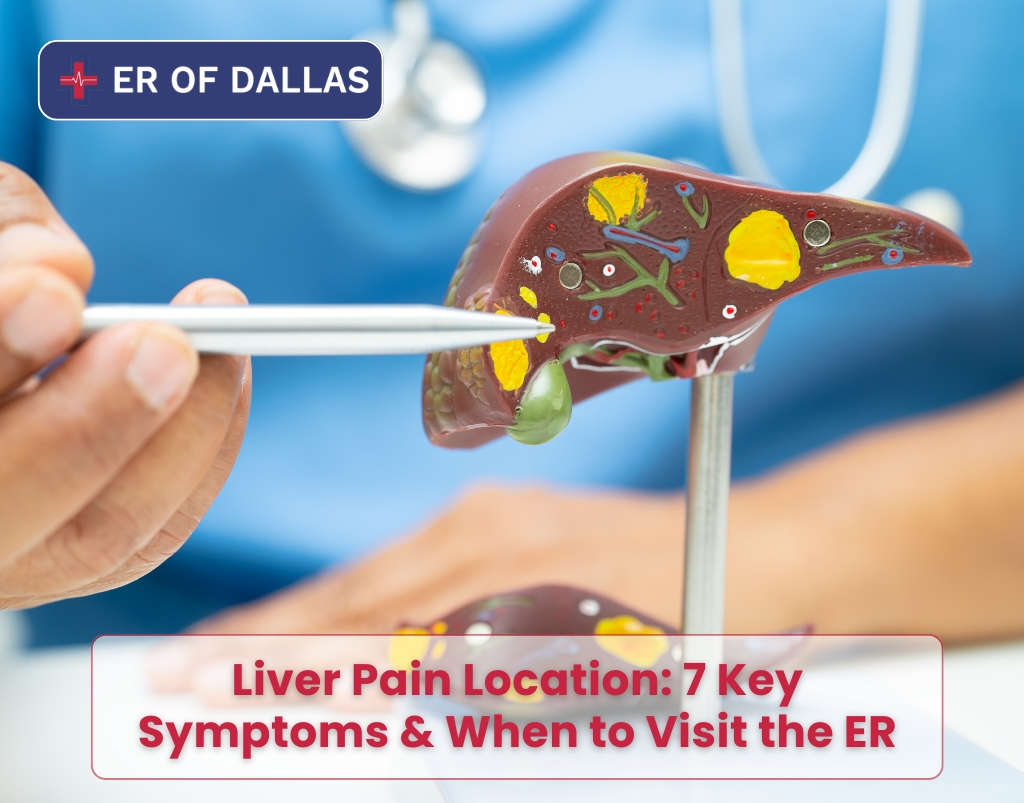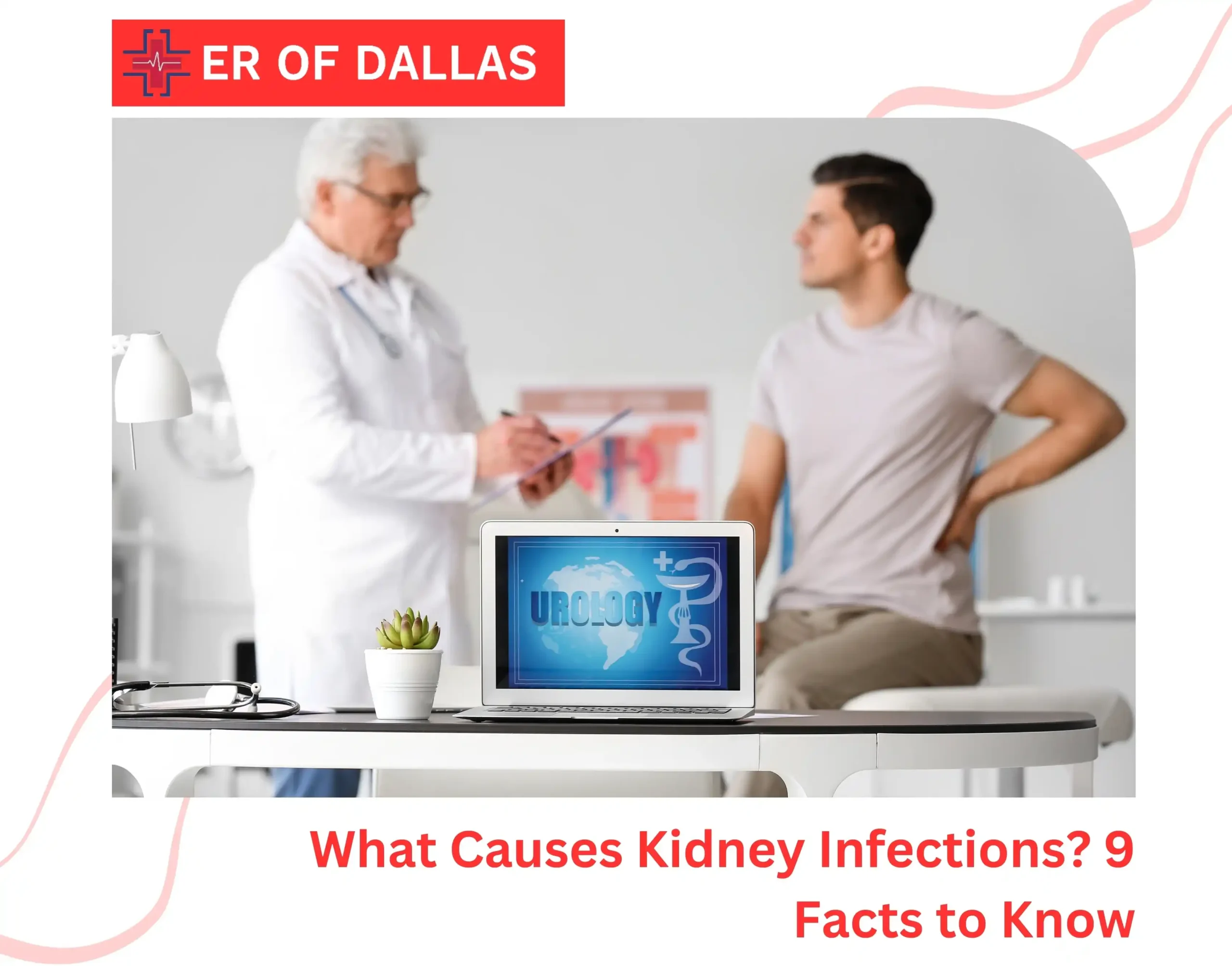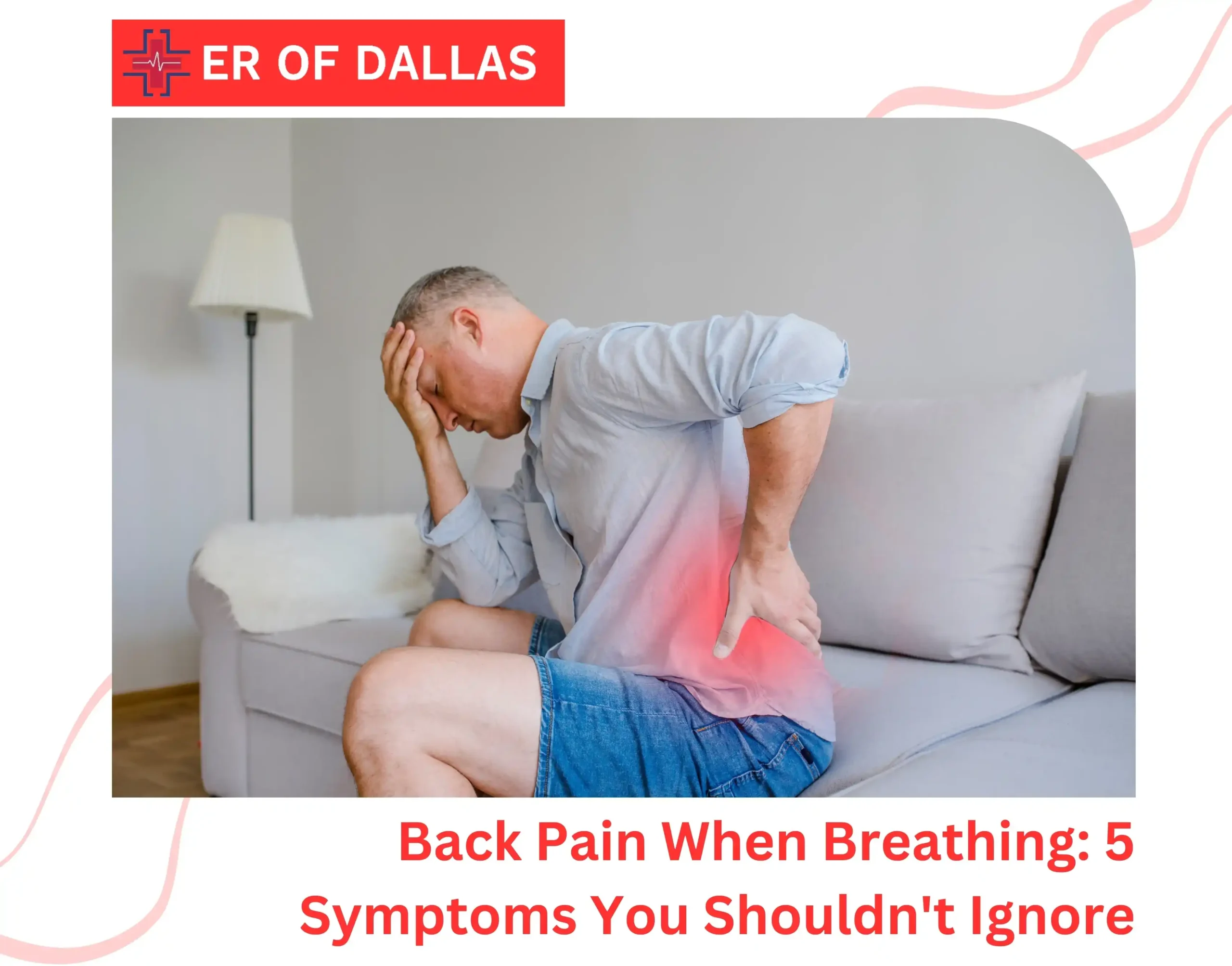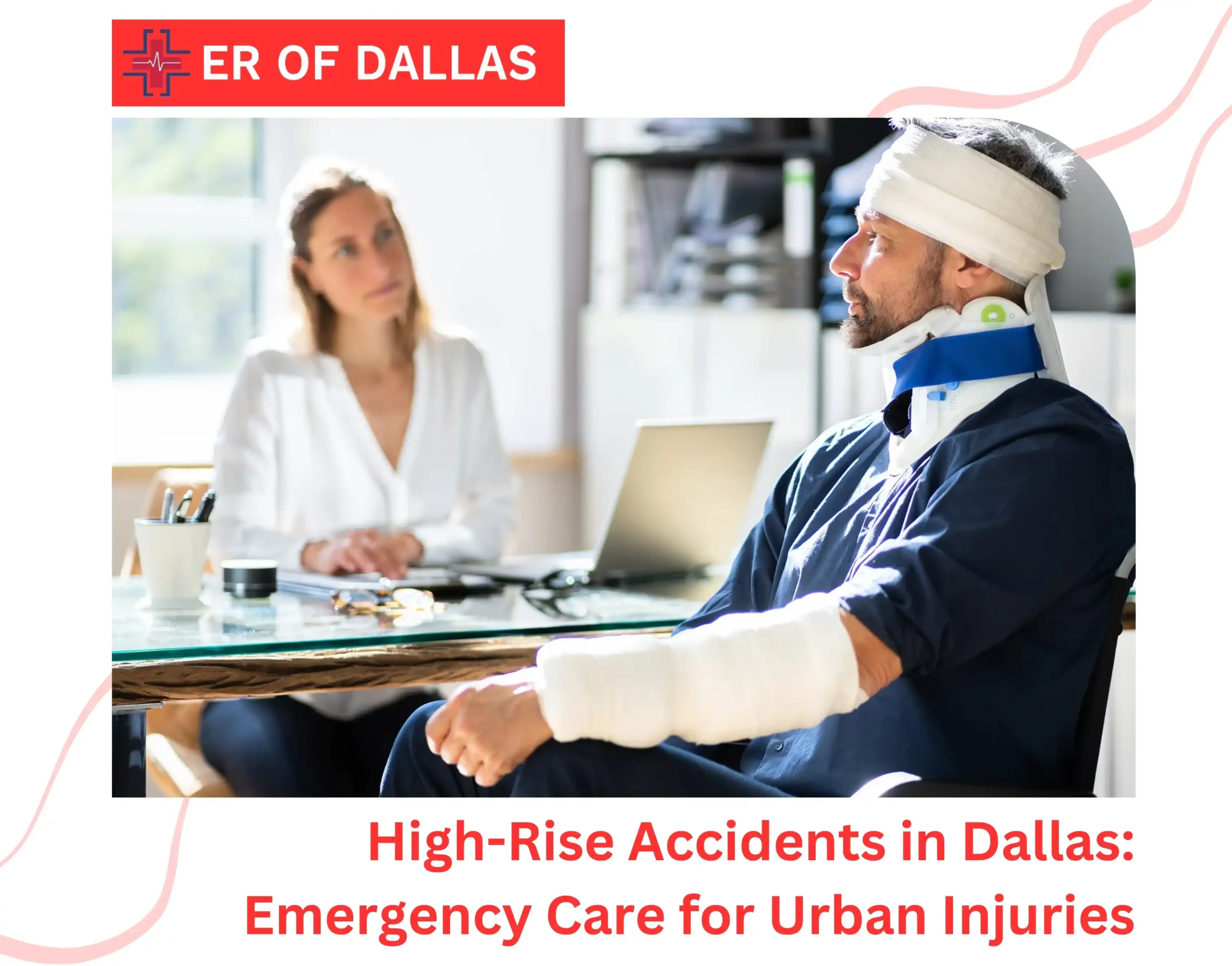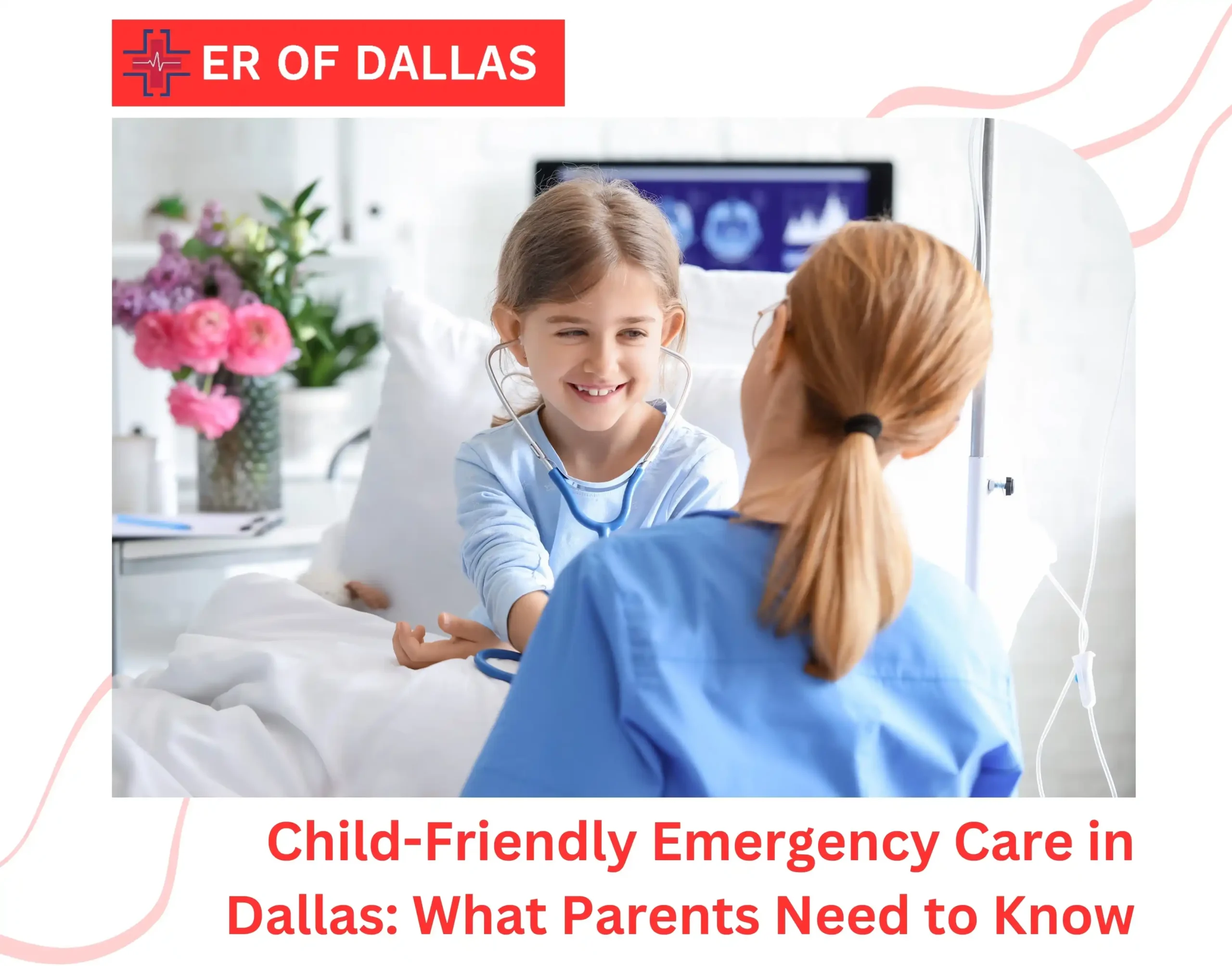In a medical emergency, every minute spent traveling to an ER could impact your outcome. Whether it’s chest pain, severe injury, or a child’s high fever, the time between symptom onset and treatment often determines recovery.
With Dallas’s vast network of neighborhoods and busy highways, knowing your local emergency room is crucial. In a city this big, let’s talk about why choosing the closest emergency rooms in Dallas can save your life.
What Is the Purpose of an ER?
Emergency rooms are the frontline of medical care. They provide immediate help when time is critical. They have on-site labs and imaging tools like X-rays and blood tests to quickly figure out what’s wrong.
With expert staff, advanced technology, and the right resources, ERs work to keep you stable and get you back to normal fast.
ER visits have increased in recent years. In 2021, there were 140 million ER visits in the U.S.—about 43 visits for every 100 people.1 This high demand comes from the fact that ER is available 24/7, year round.
How Do You Decide If I Should Go to the ER?
You should go to the closest emergency rooms in Dallas if your condition is severe, or getting worse. Few examples include:
- Severe chest pain or abdominal Pain
- Vomiting blood
- Severe dehydration
- Trouble breathing
- Weakness, numbness, or confusion
- Severe allergic reaction
- Deep wounds
- Broken bones
- Seizures
- Burns
- Fainting
If you’re unsure about the severity of your condition, don’t hesitate to reach out to ER of Dallas for guidance.
8 Top Reasons To Choose Closest Emergency Rooms in Dallas
Choosing the closest emergency rooms in Dallas can be a matter of life and death. Here’s why:
1. Less Travel, Less Stress
In the middle of a health emergency, the last thing you want is to be stuck in traffic or circling downtown looking for an ER. In a city as big as Dallas, a closer ER means less time stressing over directions and traffic jams. Plus, the driver won’t have to rush, making it safer for everyone.
2. Familiarity with Directions
If you choose the closest ER in Dallas, you’re already familiar with the directions. Having seen it many times on your way home, the route is stored in your subconscious. In a health emergency, you’ll get there directly without fumbling with GPS, traffic, or road closures.
3. Faster Treatment
In a medical emergency, distance makes a difference. Having an emergency room nearby means quicker access to care for conditions like asthma attacks or severe chest pain. Choosing the closest emergency room in Dallas helps ensure you receive prompt treatment when you need it most.
4. Family Can Reach You Faster
If you need to stay longer for observation, staying close to home means staying close to your support system. This offers practical advantages:
- Family members can quickly bring forgotten medical documents or insurance cards.
- They can deliver essential items like fresh clothes, phone chargers, or medications.
- They can provide emotional support and comfort when you need it most.
5. Less Ambulance Cost
Ambulance rides can be expensive. You’ll be charged for every mile the ambulance travels to the ER. If you are not living in proximity to the ER, those extra miles add up to the overall bill. Choosing the nearest emergency rooms in Dallas means fewer miles and lower costs.
6. Shorter Triage At ER
Having a nearby ER that you visit regularly means they already know your medical history. When emergencies arise, the team can access your records quickly and start treatment sooner, avoiding repeated tests or lengthy explanations about your health background.
7. Quick Follow-Up
Sometimes, you need to return to the ER for a check-up or follow-up care, whether it’s once a month or weekly. Wouldn’t it be better to go somewhere nearby instead of trekking across town? If it’s close, you can get in and out without wasting your whole day.
8. Less Anxiety
With directions, cost, and everything under control, you’ll feel calmer, which helps with quicker recovery. Otherwise, anxiety can add to the health burden. Choosing the closest emergency room in Dallas makes life simpler.
Emergency Room Visit Costs
The cost of your emergency care depends on several factors:
- Severity of Condition: Minor issues cost less than serious ones like heart attacks or broken bones.
- Tests & Procedures: Blood tests, X-rays, CT scans, ultrasounds, or surgeries can add to the bill.
- Medications: Prescription drugs, IV antibiotics, or pain relievers may increase costs.
If you’re worried about the cost, ER Dallas accepts most major insurance plans and offers flexible payment options to ensure you get the care you need.
Urgent Care Vs Emergency Room
Here’s a quick difference between an urgent care and emergency room:
| Urgent Care | Emergency Room (ER) | |
| Purpose | Treats minor illnesses and injuries that need prompt care but aren’t life-threatening | Handles serious, life-threatening conditions requiring immediate care |
| 24/7 Availability | No | Yes |
| Wait Time | 30 minutes to an hour | Varies based on severity |
| Conditions Treated | Mild infections, minor burns, small cuts, sprains, minor fractures | Heart attacks, strokes, severe bleeding, asthma and breathing troubles, major injuries, seizures, loss of consciousness |
| Onsite-Services | Basic lab tests, stitches, IV fluids for mild dehydration | Advanced imaging (CT scans, X-rays, echo), surgery, trauma care, life-saving interventions |
| When To Go | Condition is urgent but not life-threatening | Condition is severe, worsening quickly, or potentially life-threatening |
Tip: Emergency rooms can handle everything urgent care does, like mild infections or fractures—but urgent care can’t handle ER-level emergencies. If you’re in doubt, always go to the ER.
Final Thoughts
A closer ER means you’ll see a doctor sooner, get tested faster, and start treatment earlier. At the end of the day, emergencies are already overwhelming. Keeping things simple by choosing the closest emergency room in Dallas brings you peace of mind.
Remember, closer is always better in an emergency. Stay safe!
FAQs
What should I bring with me when visiting the ER?
ID, insurance (if you have it), a list of medications you use, medical history, and emergency contacts. A phone charger, jacket, and a book or puzzle to pass the time can also help.
Why do I want to go to the ER?
When you have severe symptoms, you don’t just cross your fingers and hope it gets better. You need an ER visit as soon as possible to address the issue and rule out serious conditions. Even if you’re unsure, it’s better to get checked than to ignore it. Your life is worth more than the risk of waiting.
How long does an average ER visit take?
ER visits can last 1-6 hours. It depends on how serious your condition is, how busy the ER is, and how long your treatment procedure takes. Life-threatening cases are seen first, so wait times vary.

